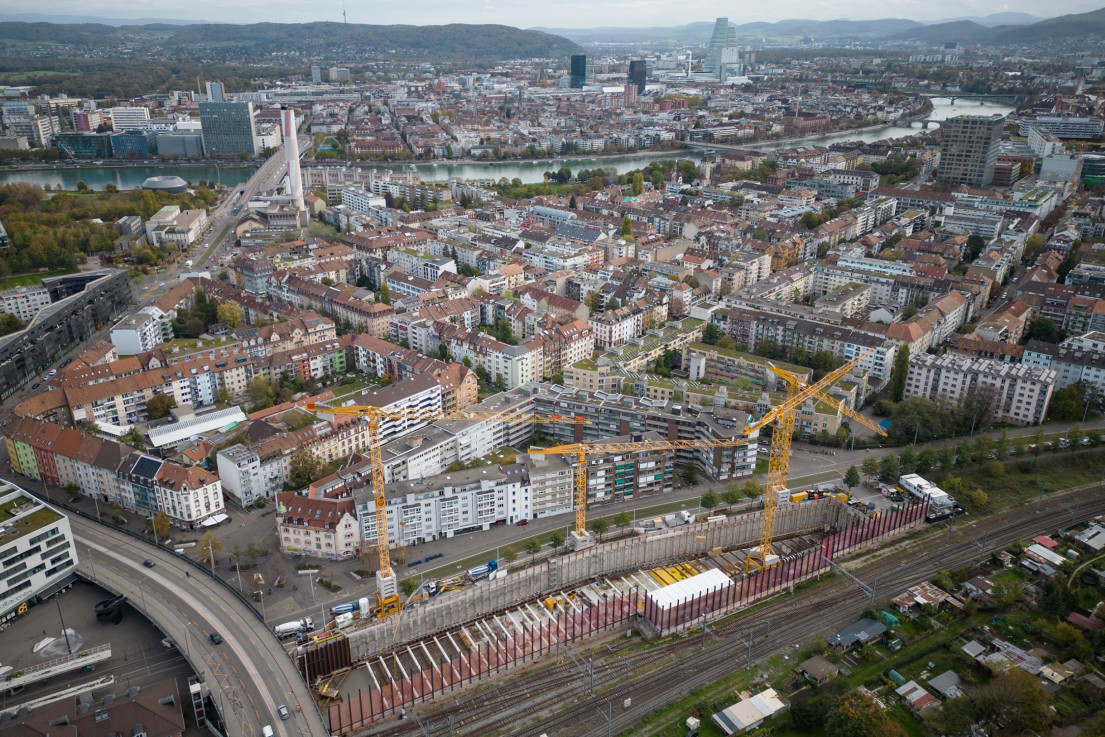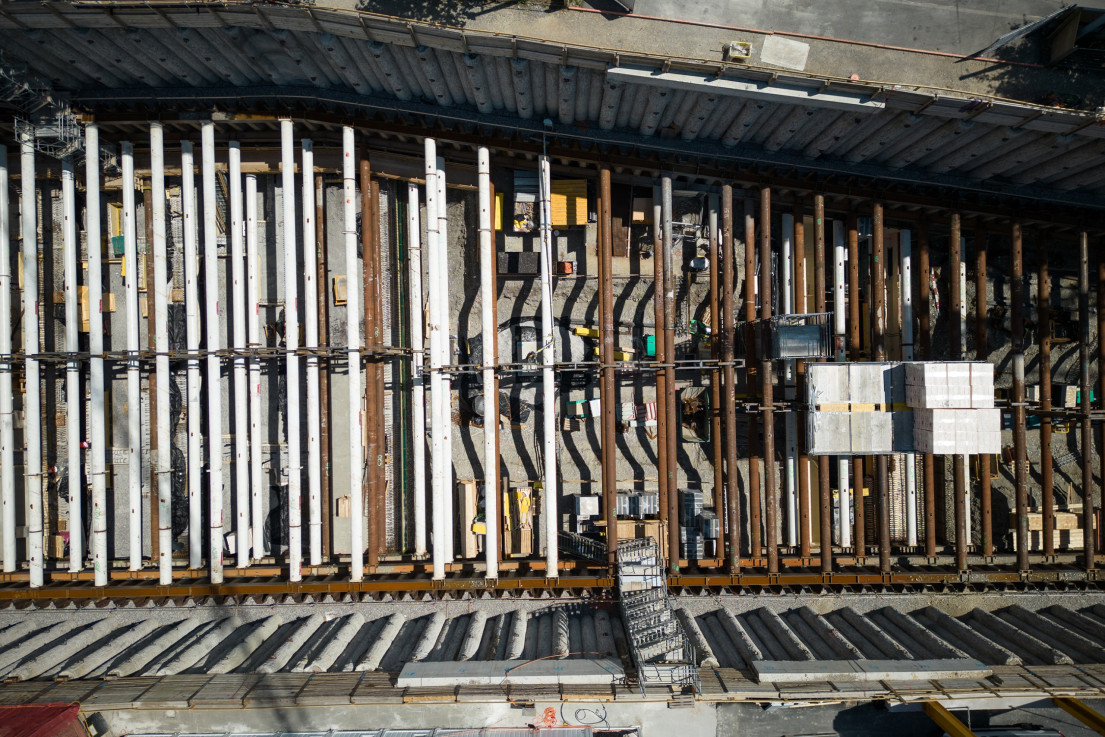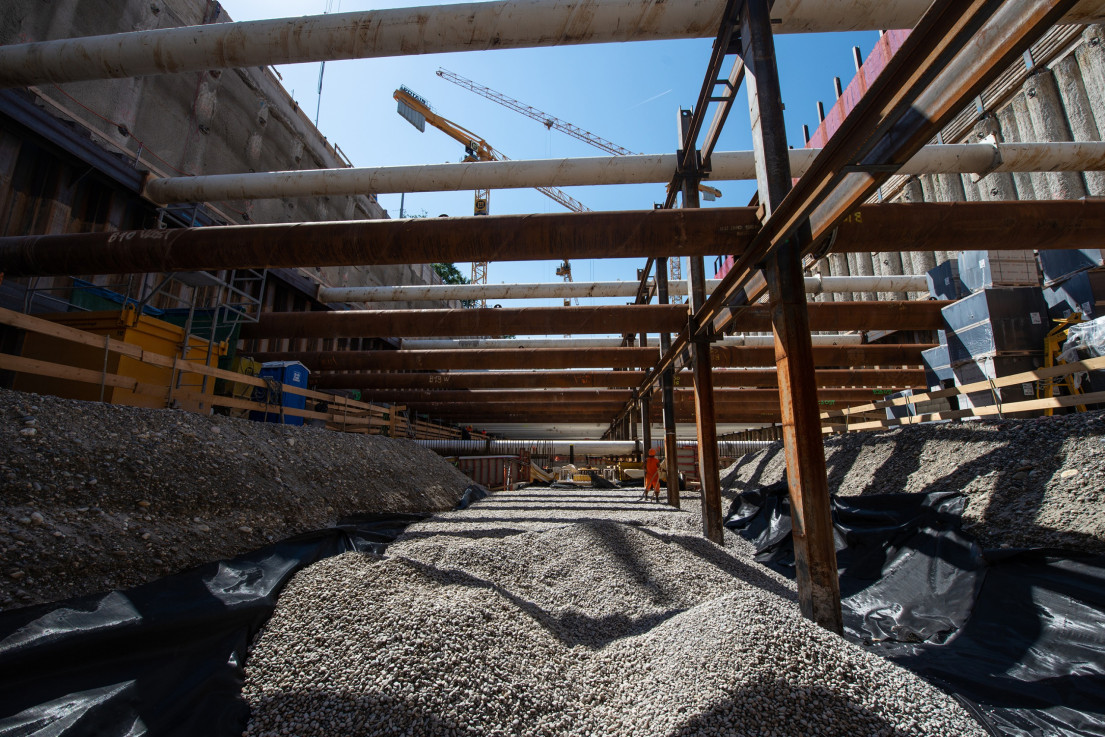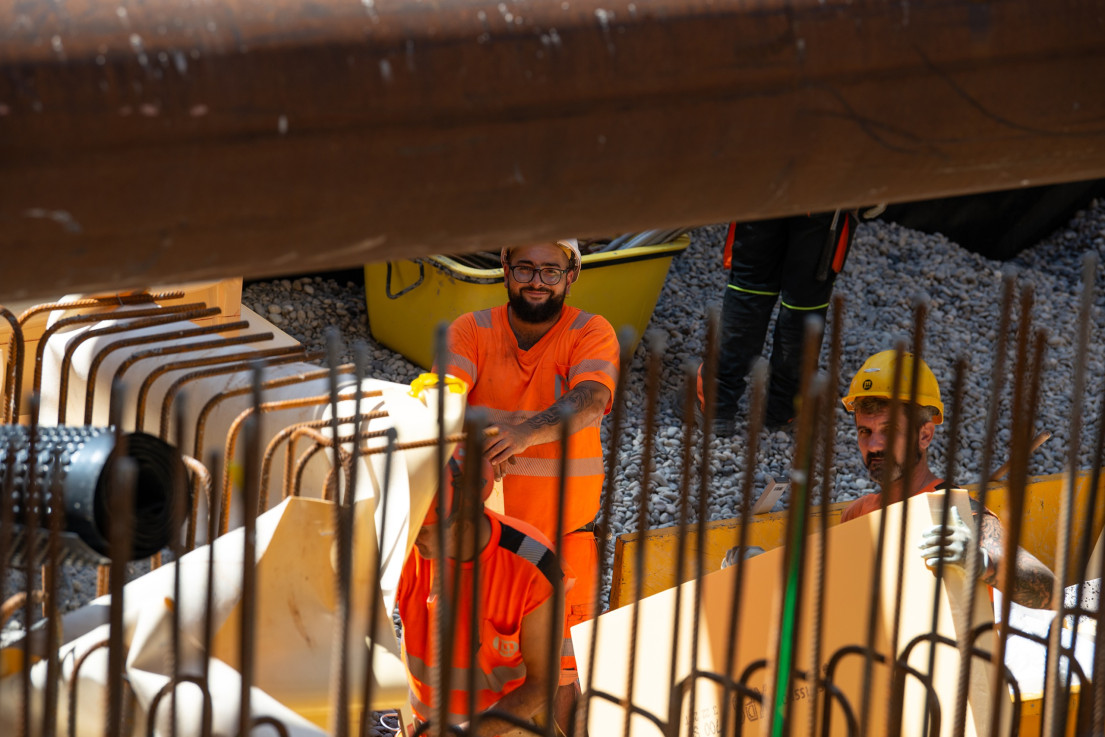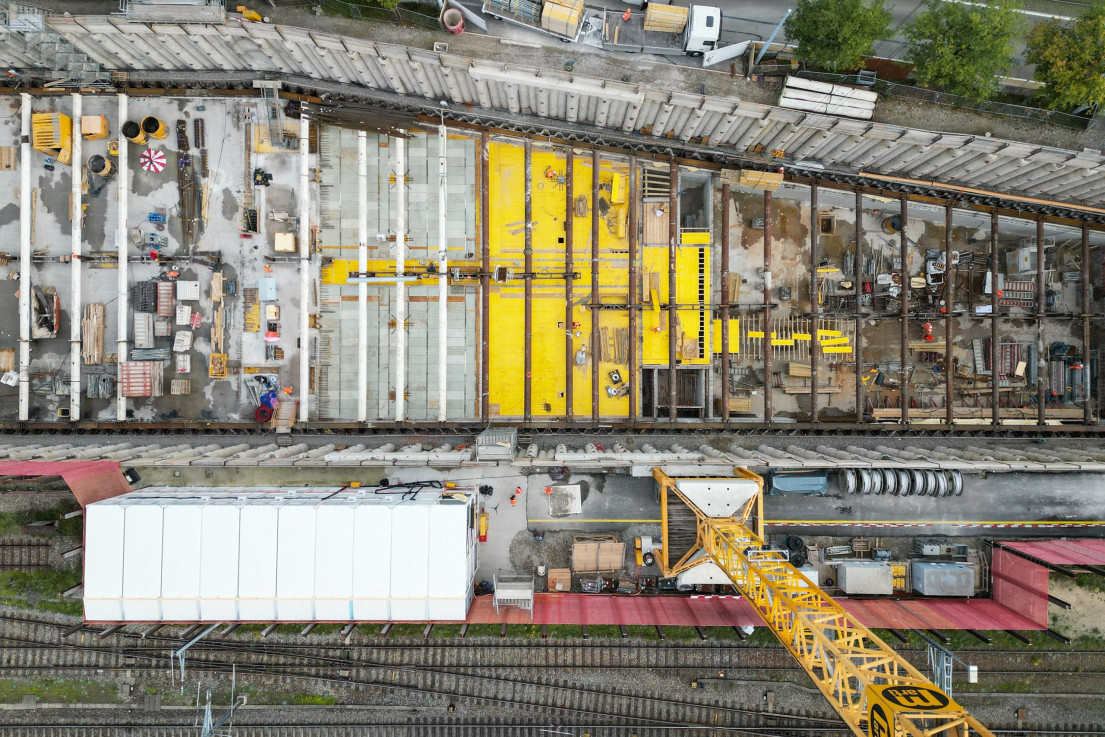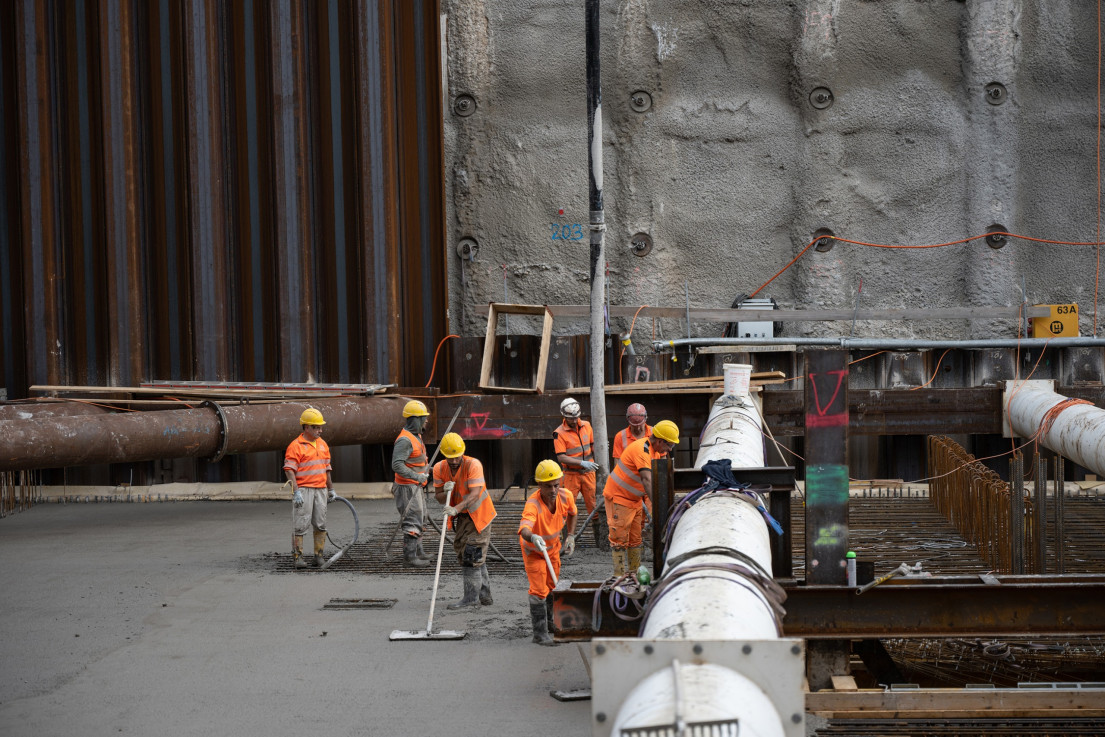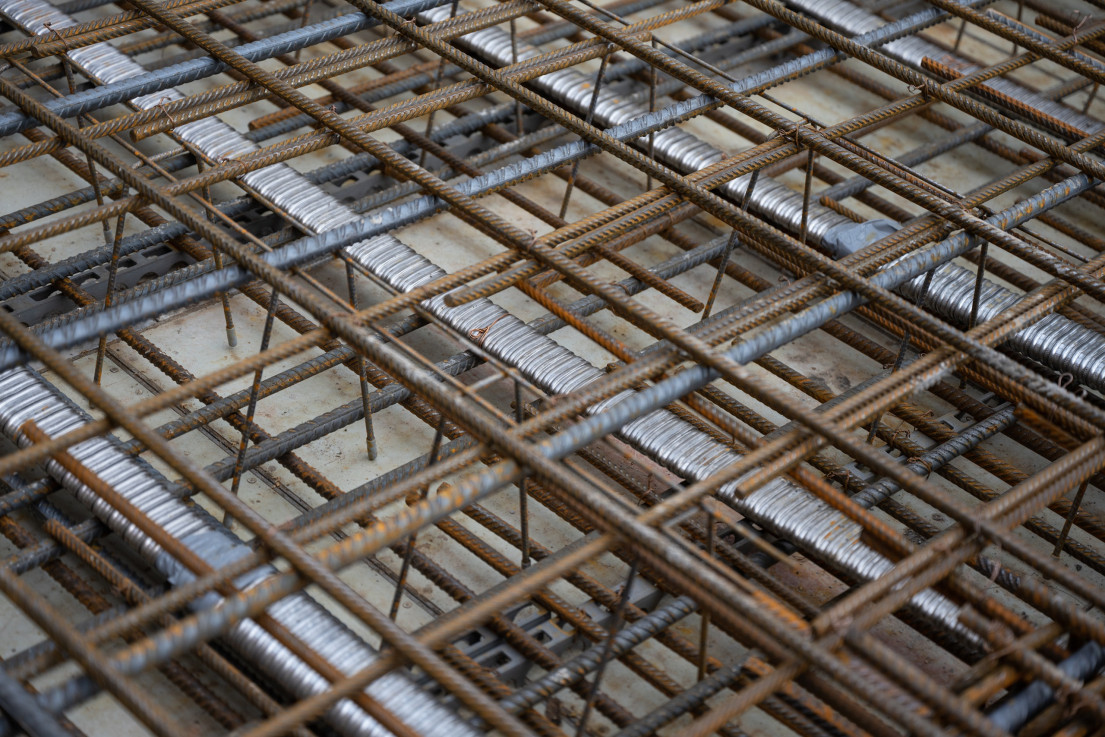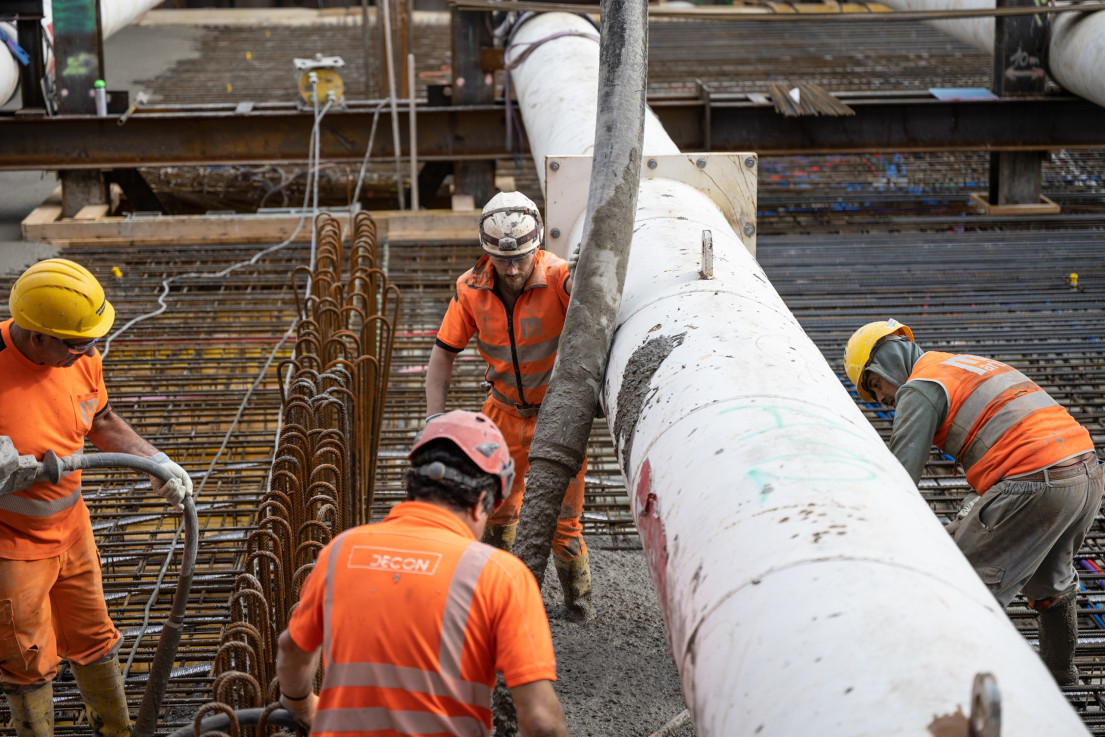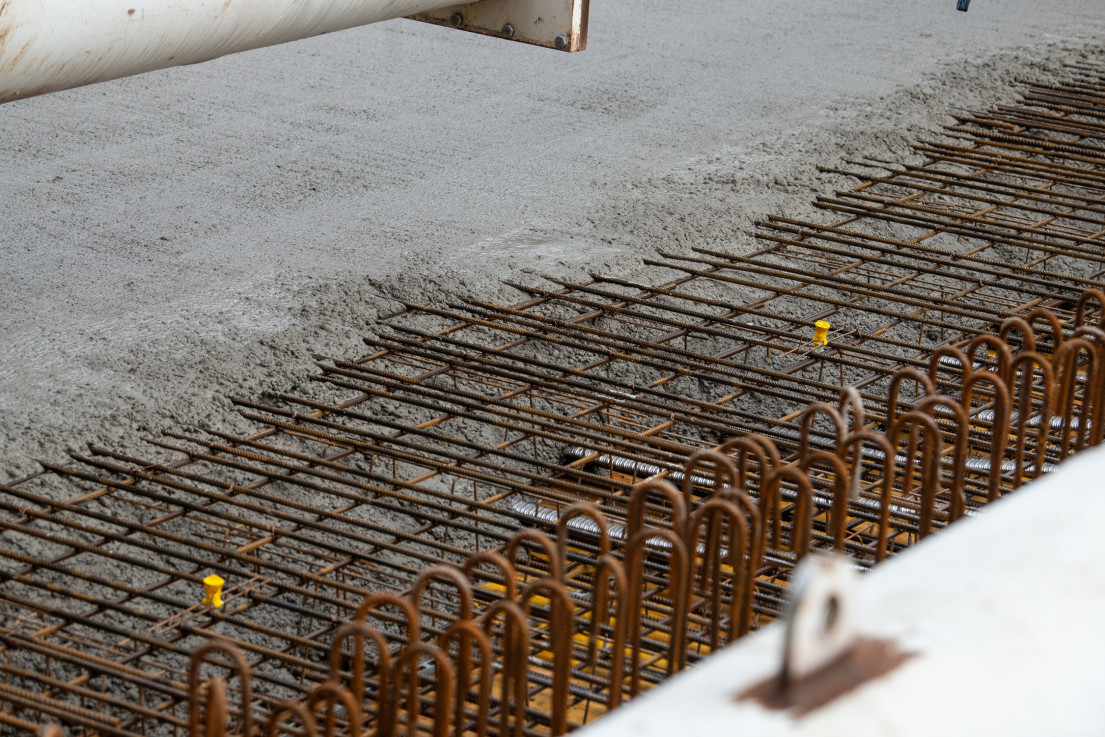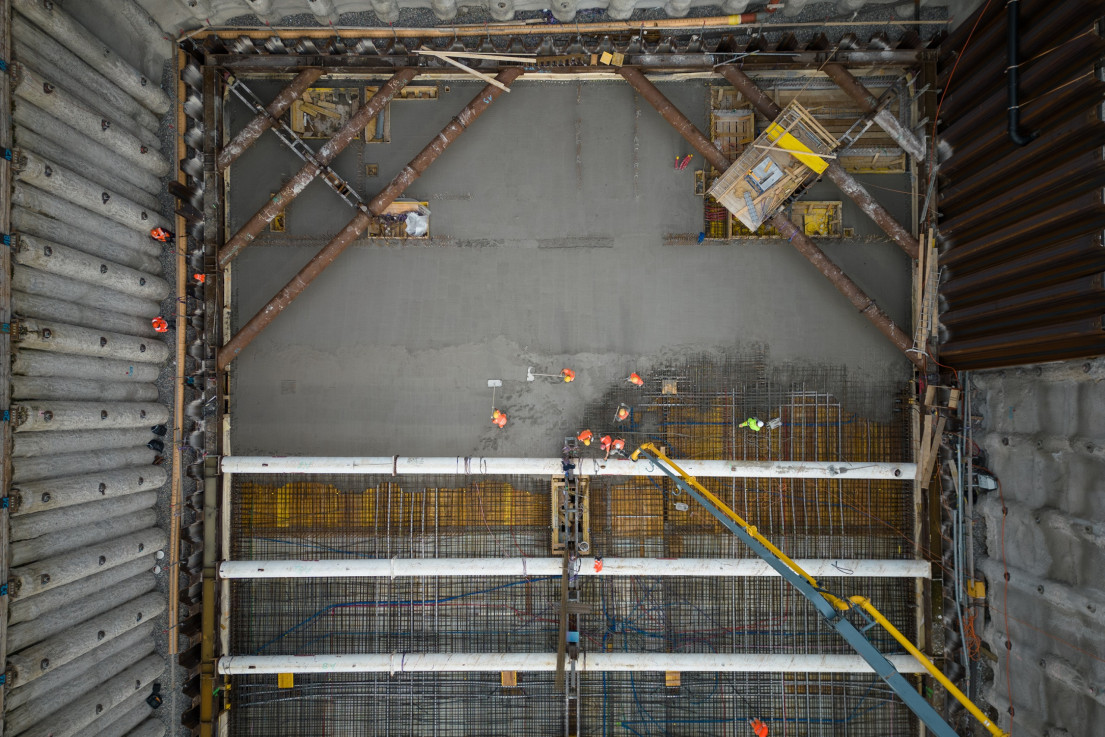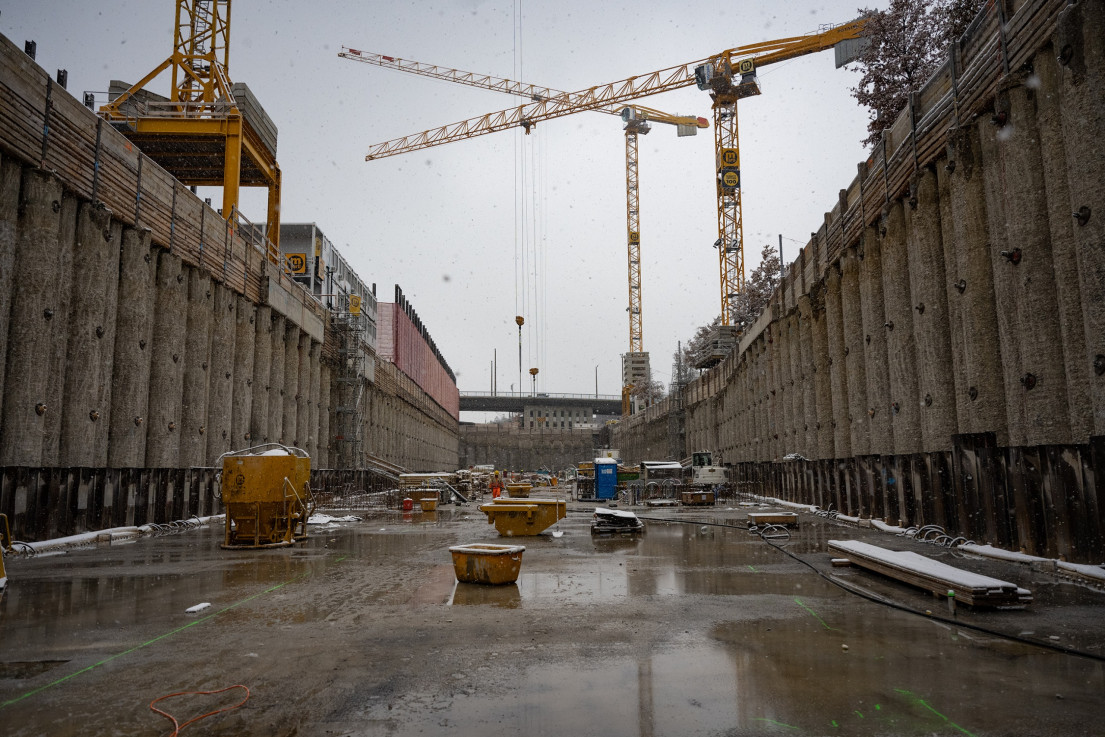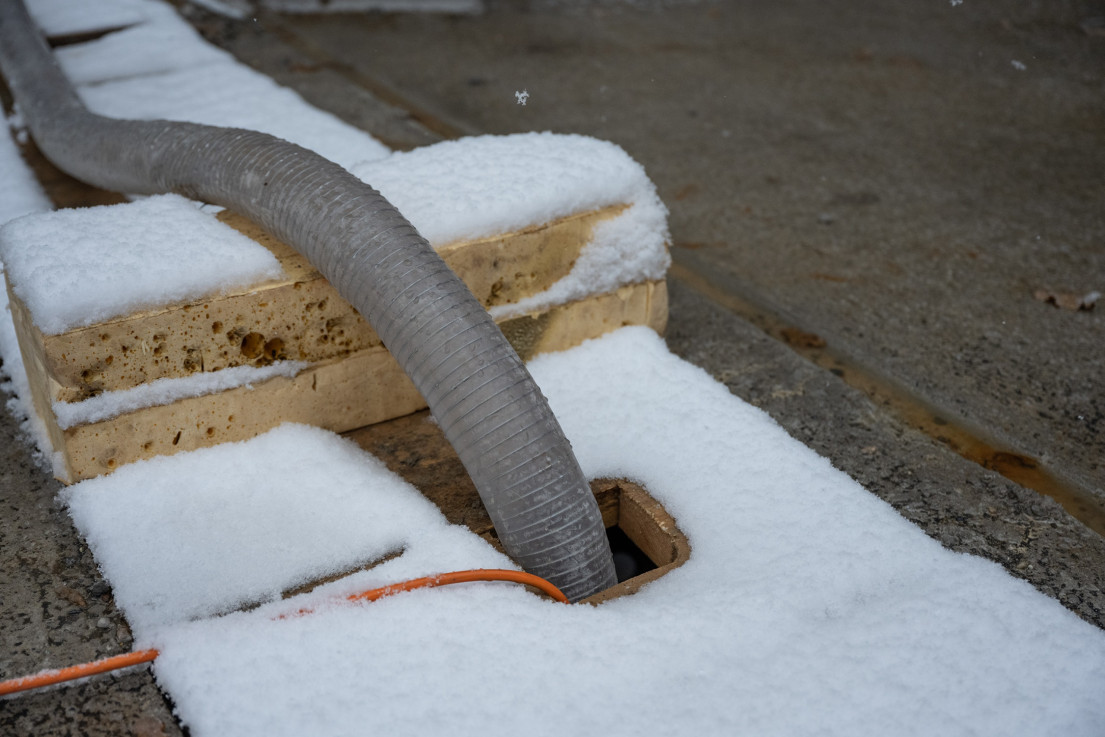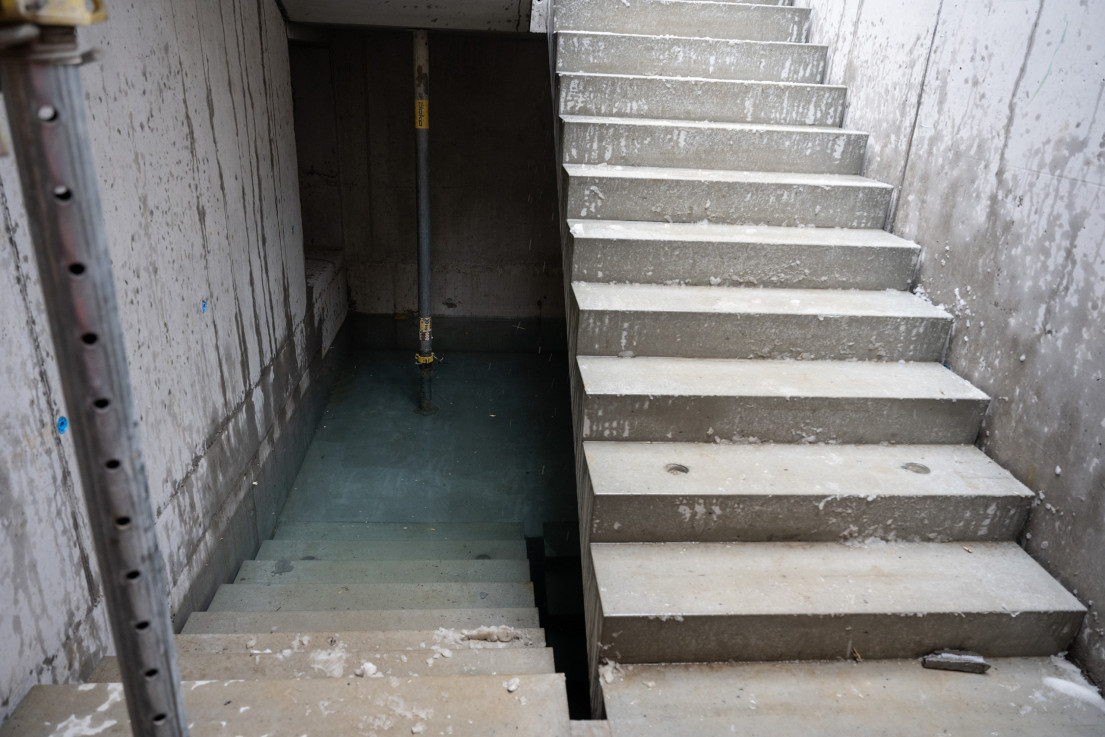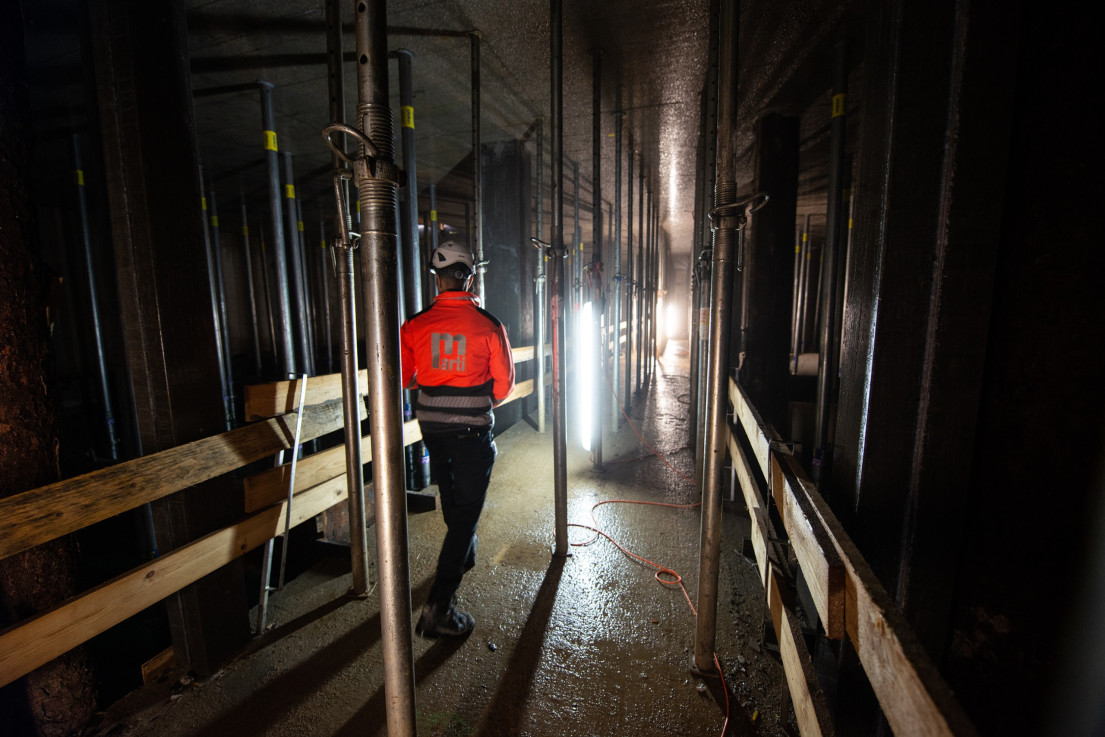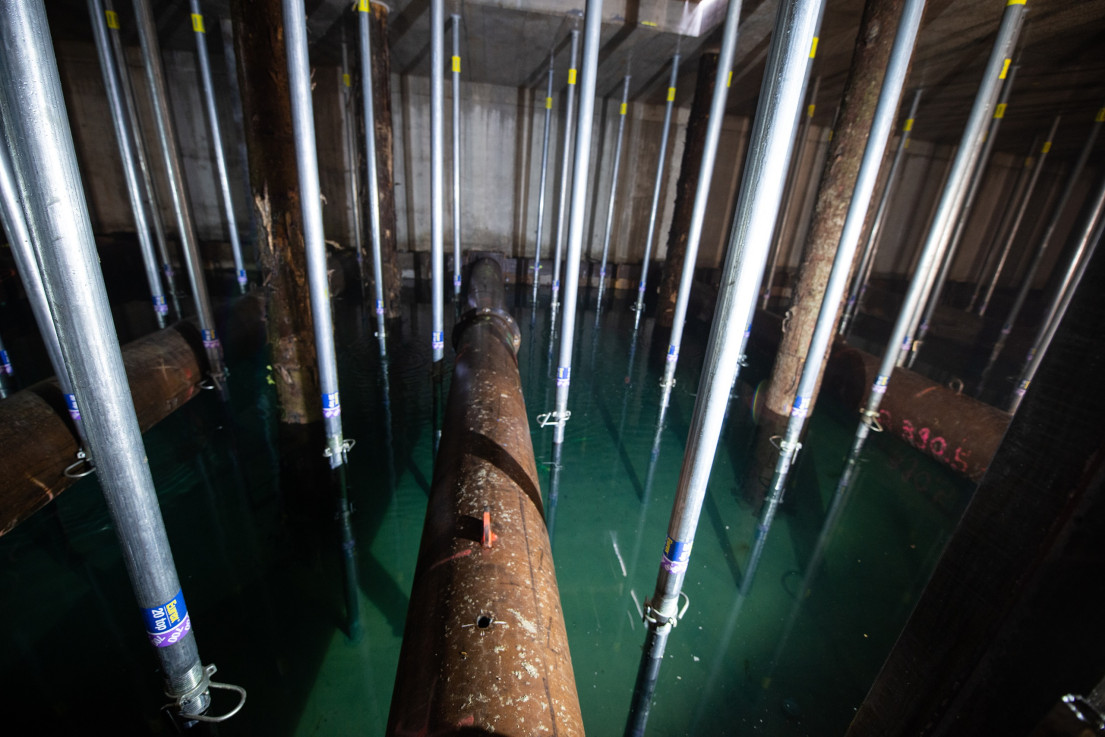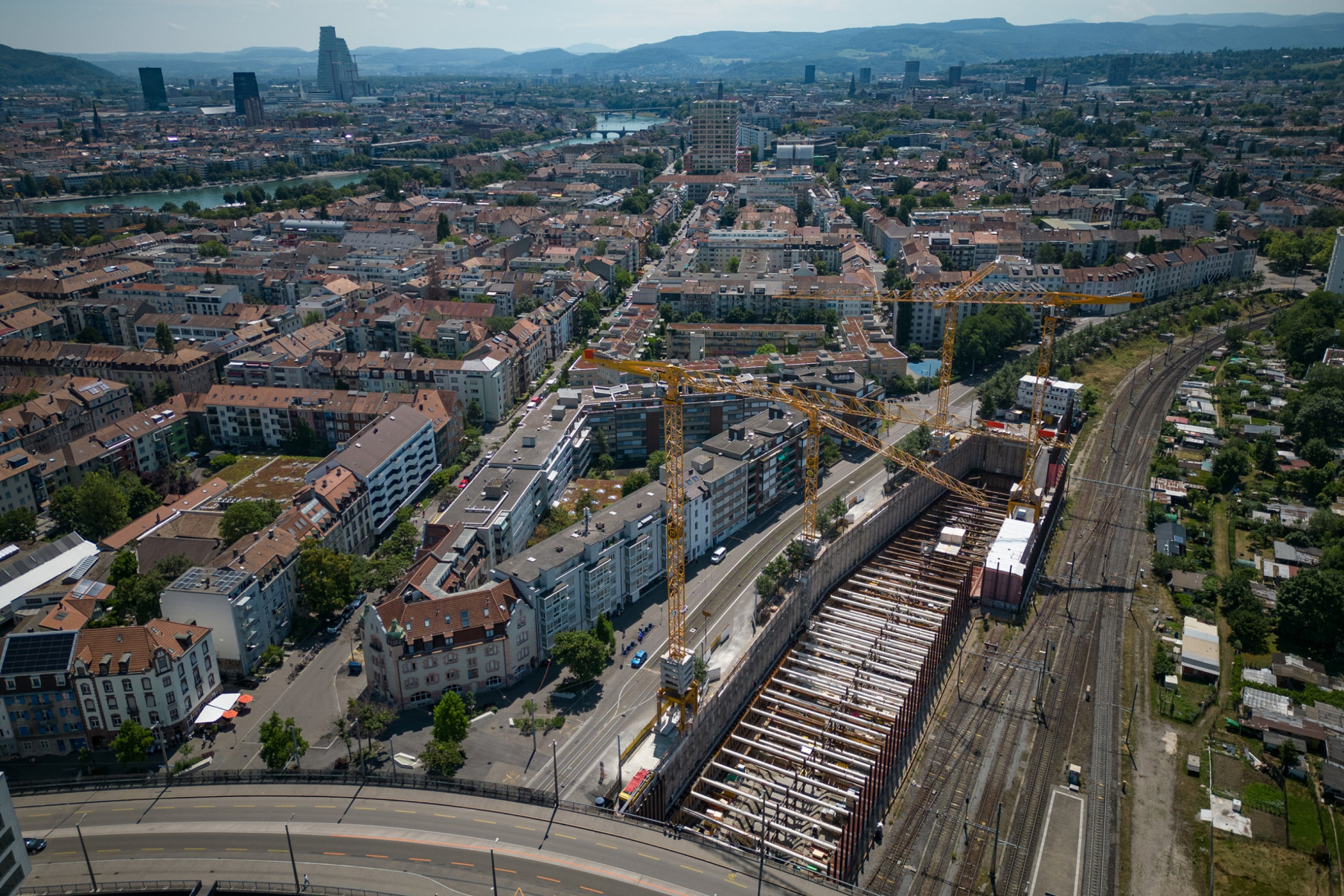
An inner lining is flooded in Basel
A new cultural building is under construction in the up-and-coming St. Johann district of Basel. The Natural History Museum Basel and the State Archives of Basel-Stadt will be sharing the structure in the future. Marti Basel is erecting the inner lining of this forward-looking new building.
The Natural History Museum Basel and the State Archives of Basel-Stadt both look back on a long history in which they have served together as the region’s memory for its rich natural and cultural past. However, the two institutions are currently housed in older buildings in need of renovation, and space is beginning to run out for both of them. For these reasons, a new joint cultural building is being constructed on Vogesenplatz. A unique repository of information that combines the knowledge about the natural world and culture is thus being created at this new location. The construction project began in summer 2021, and Marti Basel has been working on the inner lining since spring 2022.
Summer 2022: start of construction of the inner shell with baseplate
Marti has been on-site since May 2022 and is currently doing work on the new building’s baseplate. In an initial step referred to as the “groundwater relief flow measure,” the company is installing around 4,000 m³ of washed concrete gravel between the main strip foundations. The flow of groundwater is interrupted by the excavation, which is bolstered by sheet pile walls and stay braces propped up against each other, and this work will allow the groundwater to take its natural course again. Also the later building stands then, like a bar, crosswise in this water stream. Flanked on one side by railroad lines of the Swiss Federal Railways and on the other by streetcar tracks belonging to Basel’s public transport company, the location of the construction site requires that action be taken to dampen vibration. The entire building is therefore being decoupled from its environment through special insulation that will optimally protect the cultural assets to be stored in it in the future. All of this work is currently hampered by the three layers of horizontal stay braces, and space constraints make it impossible to use larger machines. The crane operators and the employees working in the excavation thus need to plan and move things around with great precision.
Construction in urban areas is always a challenge, and conventional excavation work is simply infeasible in such tight spaces
Fall 2022: prestressed ceilings installed
Good progress has been made on the work on the 4th and 5th basement floors, with two of the horizontal layers of stay braces already removed. The construction crews are currently pouring concrete for a ceiling for basement floor 4 in tract B. This concrete stage of about 400 m³ will take about one working day to complete. The delivery of concrete must be timed perfectly, as there is no room for intermediate storage on the construction site. Upon completion of this stage, it is necessary for the ceiling to cure for roughly six days, before it has the minimum strength for the subsequent post-tensioning work. Although experienced construction workers find such concrete pouring to be routine, the work remains complex due to the last layer of horizontal stay braces.
In each completed ceiling, 60 tons of embedded reinforcements and around 1.2 km of prestressing cables are installed in addition to the concrete. In this case, prestressing is needed to achieve larger spans and higher live loads. This leads to more open spaces within individual rooms through a reduced number of supporting pillars.
December 2022: basement floors 4 and 5 flooded
With the first snowflakes gently fluttering to the ground, winter has arrived. The ceiling above the 4th basement floor is done, and the last top layer of stay braces is gone. Water is now gurgling through two supply hoses and into the two finished concrete basements. The last safeguard for the excavation will be removed when the sheet pile walls are pulled starting in mid-December. To ensure that the foundation then has sufficient weight to withstand the pressure of the groundwater, it is flooded in advance with around 15,000 m³ of water. The water has been flowing for four days and is currently just below the ceiling of the 5th basement floor. Within the next three days, the 4th basement floor will also be under water – including 2,500 vertical steel braces and 200 logs that support the ceilings from below, ensuring that heavy equipment can be safely moved on top of them to deconstruct the sheet piles. Marti will resume work on the inner lining in January 2023. As soon as the building has sufficient dead weight of its own, the water can be pumped out again. This could be as early as April, assuming the water table is low, but will otherwise not be possible until summer 2023.

